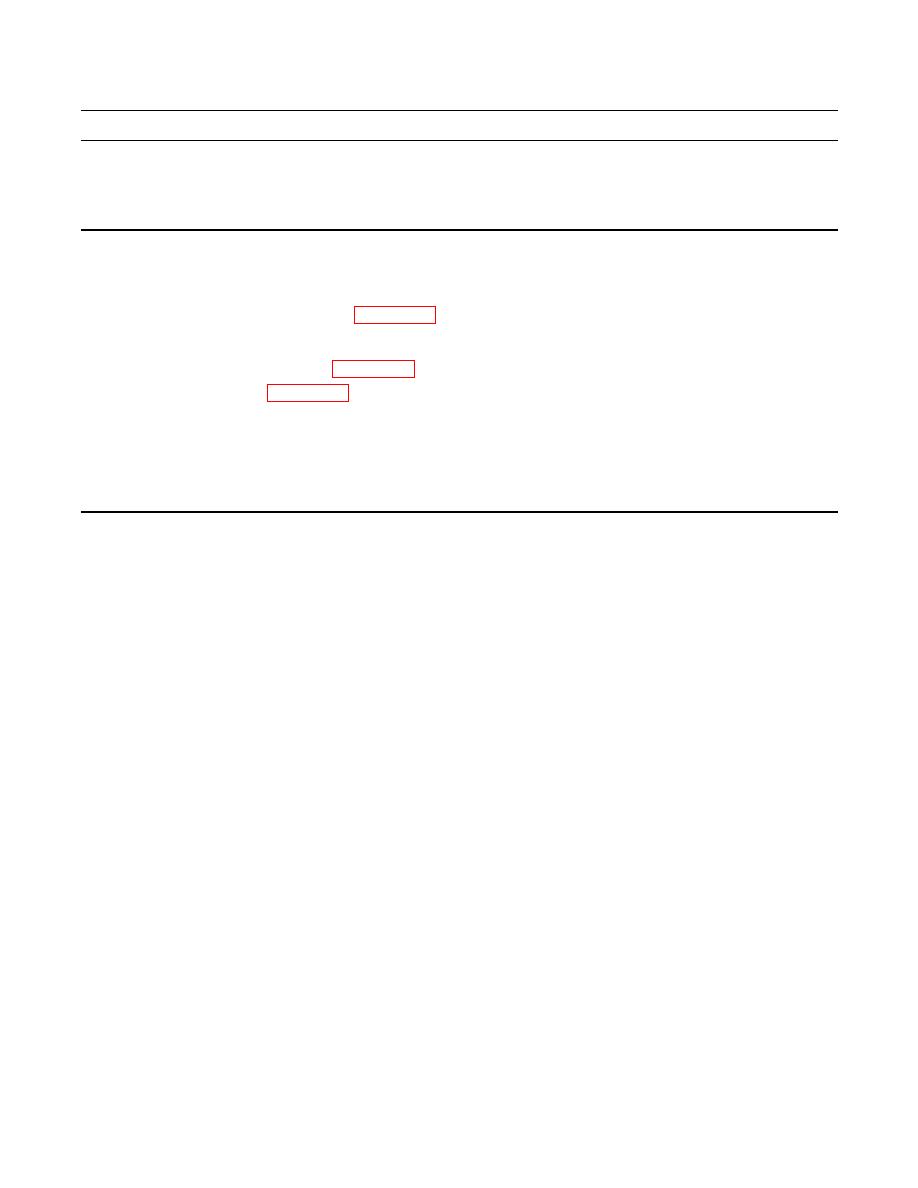 |
|||
|
|
|||
|
Page Title:
REAR AIR BRAKE CHAMBER MAINTENANCE |
|
||
| ||||||||||
|
|
 TM 9-2320-302-20-2
REAR AIR BRAKE CHAMBER MAINTENANCE
THIS WORK PACKAGE COVERS
Inspection, Removal, Installation
INITIAL SETUP
Tools and Special Tools
References
Tool kit, general mechanic's (Item 50, WP 0306 00)
TM 9-2320-302-10
Materials/Parts
Equipment Condition
Compound, sealing, pipe (Item 13, WP 0305 00)
Brakes caged (TM 9-2320-302-10)
Tags, marker (Item 34, WP 0305 00)
Parking brake released (TM 9-2320-302-10)
Pin, cotter (P/N 2257-C-1173)
Vehicle blocked
Pin, cotter (P/N 2257-D-1174)
Nut, lock (P/N 9002001) (2)
Air system drained (TM 9-2320-302-10)
INSPECTION
1.
Chock wheels.
NOTE
When inspection has been completed, ensure that weather seal cap is installed in release stud hole in spring
brake chamber.
2.
Remove weather seal cap from spring brake chamber and visually inspect through release stud hole. When fully released
with 90-120 psi air pressure, top of piston on chamber should be no more than 1/4-3/8 in from top of head. Release stud
access hole in center of piston should be somewhat centered.
3.
Cage the brakes (TM 9-2320-302-10). If brakes will not cage, suspect a broken spring. Go to step 4.
4.
Apply parking brake and measure pushrod stroke. A short or no stroke, compared to other wheels, indicates a broken
spring.
5.
With parking brake applied, tap head of spring brake chamber. A good spring will produce a ring/harmonic vibration.
NOTE
In some cases brake chamber pushrod will return to zero position with a broken spring condition. Check in
step 6 should not be considered as a definitive test.
6.
Release parking brake and measure pushrod position. If it does not return all the way to zero stroke position, suspect a
broken spring.
|
|
Privacy Statement - Press Release - Copyright Information. - Contact Us |